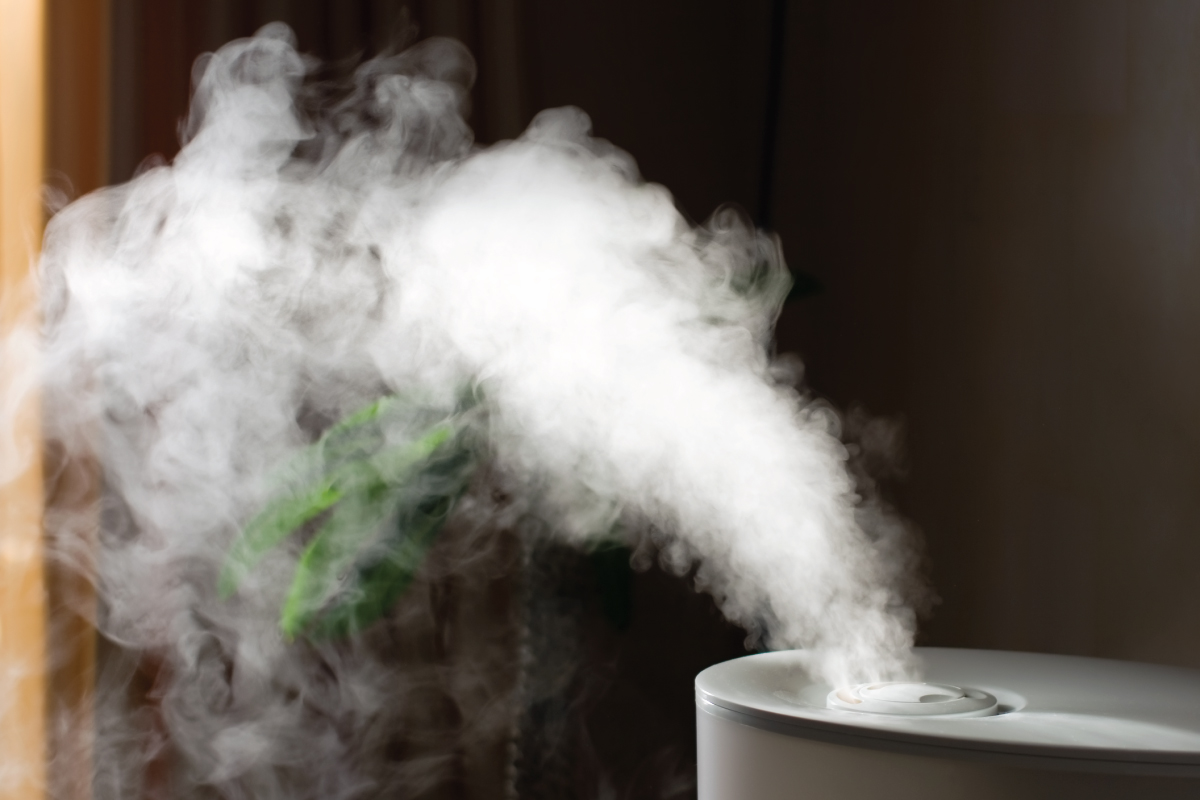Humidity is an important component of indoor comfort and air quality. Adding a humidifier to your heating and air conditioning system is something that you can do yourself to improve your air quality and comfort. How much will this installation cost? We've researched the cost to add a humidifier to your furnace, so you can budget accordingly for this project.
Installing a new humidifier to your home's furnace can run anywhere from $200 to $400, though more expensive models can cost up to $1,500. Things that can influence the cost of the humidifier's installation include the following:
-Type of humidifier (flow-through, steam, or drum) -Installation labor cost -Special settings or humidistat installation
It's important to understand all of the factors that can increase the cost of your humidifier installation. In this post, we'll discuss the costs associated with adding a humidifier to your furnace, along with other important details that can be helpful for this type of home improvement project. Let's take a look!

Costs of Installing A Humidifier On A Home Furnace
The first and most important factor that you should consider is the type of humidifier to be install. There are three types of home humidifiers currently on the market: steam, flow-through, and drum.
Drum
Drum humidifiers (also known as reservoir humidifiers) are the most affordable type of humidifier and typically cost between $100 and $250. They work at 100% efficiency, using all of the water inside the device to humidify the air in your home. Drum humidifiers offer the simplest operation and reliable results for adding humidity to a home.
They work on the principle of evaporation, using a rotating drum, which is equipped with an absorbent pad to create humidity. During its operation, the drum moves around inside a pan of water, which is then soaked up by the pad. As the air begins to flow through its bypass tube, the water then evaporates from the pad and is distributed into the air.
Check out this Aprilaire humidifier on Amazon.
Flow-through
Flow-through humidifiers typically cost from $200 to $400. Similar to drums, flow-through humidifiers also work mainly on the principle of evaporation. Both humidifiers use a bypass tube and absorbent pads to move warm air through their systems. The main difference between the two is how they source the water. Flow-throughs move a small stream of water across the top of the humidifier pad, while drums utilize a moving drum to divert the water inside of it.
Check out this humidifier on Amazon.
Steam Humidifiers
Steam humidifiers can cost anywhere from $500 and $1,600. In some conditions, the process of evaporation doesn't take place fast enough to where sufficient moisture levels can be maintained. In cases such as this, steam humidifiers offer the best option (versus flow-through and drum humidifiers) to get the desired humidification results, as they can typically have a faster humidification process.
Instead of evaporation used to transform water into its gas form, steam humidifiers utilize electricity. This allows them two produce larger volumes of humidity while enabling users to control their humidity levels more accurately.
Check out this humidifier on Amazon.
Labor Costs
Most HVAC technicians charge a flat rate for installation and repairs, which usually includes a service fee and an hourly rate. Depending on where you live, you can expect to pay anywhere from $50 to $100 per hour for labor. Finding a reputable and qualified technician is important with this type of installation, as a faulty setup can lead to electrical, HVAC, and/or plumbing issues in your home. Typically, technicians can install home humidifiers within two hours and four hours if a special or complex setup is required.
Special Settings or Humdistat Install Included
Humidstats, which monitor humidity levels (similar to hygrometers), are commonly installed when humidifiers are added to a furnace. This means additional labor costs, as technicians will need to size and then cut into the ducts to attach them.
Check out this Oasis hygrometer on Amazon.
Also, expensive brands of humidifiers will usually have additional or special settings that come with the device. These settings often require an initial setup or calibration by the technician and may require the installation of additional components.
Where Should A Humidifier Be Placed On A Furnace?

Each humidifier system will have its own set of installation directions. Flow-through, drum, and steam humidifiers are usually installed on the supply (or hot air) duct. Some manufacturers allow them to be placed on a furnace's return duct when there is hot water being utilized instead of cold water. And in some cases, some brands allow for wall mounting as well.
How Long Does It Take To Install A Humidifier On A Furnace?
Most HVAC technicians can install a humidifier on a furnace within about two hours, given the system doesn't require any special setups. If you are attempting to install a humidifier on the furnace yourself, depending on your electrical knowledge and handyman skills, it can take anywhere from two to five hours. Let's take a glance at what this process looks like.
Here's an outline of the basic steps involved in installing a humidifier on a furnace.
How to Install a Humidifier To A Furnace
1. Looking at the instructional manual, decide where the humidifier can be installed. Next, remove all of the materials included in the installation kit that came with your humidifier and set them aside.
2. Turn off ALL power going to the furnace. This means also shutting off electricity to the unit at your home's electric panel.
3. While wearing a pair of thick utility gloves, cut the required holes into the duct. Next, drill in the mounting holes. (Note: For accuracy, be sure to mark the center of the drill spots for each hole.)
Check out these utility gloves on Amazon.
4. Using a pair of tin snips from the humidifier kit, cut out space on the duct where the humidifier will be placed.
5. Install the humidifier on the duct. Using a screwdriver, tighten the screws provided by the humidifier kit to mount the humidifier securely on the duct. There may also be mounting tape included in the kit that you can attach as well.
6. Turn off the water supply to your home. Next, open up a faucet in any room to relieve the water pressure. (Note: You may need to contact a licensed plumbing professional assistance for this task.)
7. Attach the water supply valve to the humidifier's plastic tubing, cutting off any slack. Next, fasten the two compression fittings on both ends of the waterline. Be sure to secure the fittings tightly using an open-end wrench.
What Are The Benefits Of Adding A Humidifier To A Furnace?
Many homeowners add these types of whole-house humidifiers to their furnace to increase their daily comfortability, particularly in the winter months. It's really a matter of personal preference and the daily humidity levels of the area in which you live. Let's take a closer look at the advantages of adding a humidifier to your home's furnace.
Physical Health Benefits
Air that is too dry can wreak havoc on the human respiratory system. So, it's not uncommon for many people to experience the following conditions during the fall and winter months:
- Constantly chapped lips
- Allergy symptoms or asthma flare-ups
- Scratchy or sore throat
- Itchy and flaky skin
- Minor nosebleeding
Providing your home with an optimal amount of moisture can help keep you and your family adequately hydrated, preventing many of these physical issues.
Lower Energy Bills
Humid air tends to make us feel much warmer, as there is less room in the air for our sweat to evaporate. This is why those muggy days in the summer can seem especially warm, even when the temperature is relatively cool. It's common for homeowners to get into a cycle of raising the temperature in their homes to stay warm in the winter, causing the humidity levels to plummet.
However, in many cases, this results in excess energy usage. They could simply utilize a humidifier and get the same results. When you install a humidifier on your home's furnace, you can reduce your winter energy bills, as the raised humidity levels will make the air feel warmer.
Protection of Items in the Home
Humidifiers can also help preserve materials in your home that may be prone to cracking, splitting, and drying out from low-moisture conditions. This can include books, musical instruments, wood furniture, and wall paint/plaster. Adding humidity to your home can help increase the longevity of your personal items and the inner structures of your home.
Should A Humidifier Run All Day?
The answer to this depends on your home's current humidity levels, which will be determined by the climate in your area. Yes, you can leave a humidifier running all day without any health hazards. In fact, it's more common to leave humidifiers running all day (or night) in the colder seasons than in the spring and summer seasons.
Moisture levels tend to drop in your home during the winter months, as the cold, dry air outside is coupled with the operation of a furnace, which removes humidity from the air. These dry conditions aren't optimal for many homeowners and can dry out things in your home, such as wooden floors, furniture, and paint. A humidifier can help to keep your home at a comfortable and consistent moisture level.
However, outdoor moisture is more present in the spring and summer months, lessening the need for a humidifier during these seasons. The exceptions being that you live in a particularly dry area or that you simply prefer a specific amount of humidity for comfortability or health reasons, such as allergies or asthma-related issues.
It's recommended to keep home moisture levels at or below 50%, as prolonged humidity levels above this could lead to mildew issues and become a hazard due to electrical appliances in the home.
Wrapping Things Up
Installing a humidifier on your furnace can typically be done within a few hours, depending on other conditions involved in its set up. If you need assistance with determining the best humidifier for your system, it's always best to consult with a qualified HVAC technician.
Before you go, be sure to check out our other HVAC posts:
https://hvacseer.com/dehumidifier-in-the-basement/
https://hvacseer.com/use-humidifier-in-the-summer/





